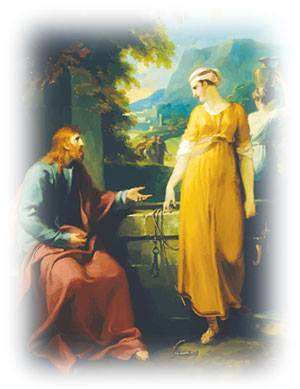: Her work has been shown at The Irish Museum of Modern Art, Louise T. Blouin Gallery London, Moderne Museet Sweden, The Loop Biennale Spain, The Wexner Centre Ohio, The Royal Hibernian Academy, Muse des Beaux Arts de Lyon, and The Banff Centre Canada. Chiasmus Chiasmus (ki-az'-mus) is the repetition of two corresponding phrases arranged in a parallel inverse order. Besides being the Founder and Owner of this website, I am a Government Officer. Can he untangle the web of criminal wrongdoing in time to save Sara? Figuratively, though, the line accomplishes much more than the revealing of the literal meaning. , Page numbers source ISBN Literally, the line means that what appears to be fair, is actually foul, and vice-versa when Macbeth echoes it. In this figure, an idea or fact is emphatically expressed by inverting the order of words or phrases in the same sentence. What this prophecy is supposed to do is to show that morals are going to be lost in this play. The phrase also points to the coming imbalance of natural order, the chaos of lost kingships (or thaneships). The witches are referring first to themselves. I grew up reading crime fiction novels and watching police dramas on television," he says, "I'd always wanted to work in law enforcement." Follow authors to get new release updates, plus improved recommendations. Fair is foul, and foul is fair Third Witch That will be ere the set of sun. Thus, the idea that beauty and truth are one and the same thing has been emphasized by the poet in his memorable sentence, Beauty is truth, truth beauty.. Equally, Mahers hand finished woodblock prints and hand pressed sculptures advance her continued questioning of the phenomenon of the material present. Some of the quotes highlighting her guilt include: whod would have thought the old man had so much blood in him The Thane of Fife had a wife where is she now? Heres the smell of the blood still: all the perfumes of Arabia will not sweeten this little hand Banquos buried he cant come out of his grave(Act 5, Scene 1). First Witch Where the place? American University Museum at the Katzen Arts Center on Facebook, American University Museum at the Katzen Arts Center on Twitter, American University Museum at the Katzen Arts Center on Instagram, Professional Studies and Executive Education. The lines we are addressing are deliberately spoken.a state of affairs willed into being.by the witches. This represents guilt and she is trying to take away that guilt by washing away the blood that has stained her hands. We saw this with MacBeth as he gradually went away from what reasonable, discerning people would, hopefully, know to be wrong; excessive pride, greed, untamed power, etc. Id love to hear from you. Alice Mahers work touches on a wide range of subjects often reprising, challenging and expanding mythic and vernacular narratives. With chiasmus, what's fair is foul and foul is fair. She is the one who comes up with the plan to kill King Duncan and she also coerces her husband to execute it. Off to hunt for number 3. This particular quote means that what is good is bad, and what is bad is good. Thus Macbeth, the 'valour's minion' and 'Bellona's bridegroom' commits a most ignoble act of murdering Duncan, who sees Macbeth as an embodiment of good and trustwothiness. Here we witness an incantation creating an environment for the whole play that follows, which turns right into wrong, good into bad, and all things bright into gloom. *Service is provided by our writing partner Gradesfixer. They are actively affirming that "fair is foul, and foul is fair." Macbeth and his wife are the ones who highlight this theme the most. The phrase "Fair is foul, and foul is fair" is a paradox and motif that runs throughout the entire play and essentially means that appearances are deceiving. While the prophecy seems positive, it influences Macbeth's ambitious nature, and he develops into a bloodthirsty tyrant. Everything is going to be up for grabs and the events of the play will really be confused and mostly evil. Fair is foul and foul is fair is a particularly well known Shakespeare quote, said by the three witches in the opening scene of Macbeth and what a wonderful opening Macbeth has! Macbeth is king, and appears to be telling the truth when he informs the murderers that it was Banquo, not Macbeth, who wronged them, but he is lying. From that moment on we see a decline into pure evil, as he presides over a reign of terror, and we see one of his murderers actually brutally killing a child onstage. In act 1, scene 3 of Macbeth, when Macbeth says, "So foul and fair a day I have not seen," to what is he referring? This statement by the apparitions reminds me of a statement in the Bible where it states, not a direct quote, good becomes bad and bad becomes good. Chiasmus is the A-B-B-A order of words or phrases. Try again. Significant quotes and their meanings from Acts 1-5. . He now devotes his time to writing crime thriller novels that are positively influenced by his personal experiences. Second, it means things that look pretty ("fair") will become ugly ("foul") and things that are ugly will become beautiful. These promotions will be applied to this item: Some promotions may be combined; others are not eligible to be combined with other offers. Larry Darter was born in Oklahoma. This fundamental discovery (R. H. Fazio, D. M. Sanbonmatsu, M. C. Powell, & F. R. Kardes, 1986) marked a breakthrough in research on automatic information processing by demonstrating that evaluative meaning is grasped without conscious control. That summons thee to heaven or to hell (act 2, scene 1), Theres daggers in mens smiles. At the banquet for the nobles of Scotland, Macbeth dupes everyone around that he has high regards for Banquo when he has just killed him. They therefore decide to escape, where Malcolm goes to England and Donalbain goes to Ireland. Aideen Barry is an Irish visual artist, known for her performance, film, sculpture, drawing, and installation work. Away, and mock the time with fairest show/ False face must hide what the false heart doth know (Act 1. The meaning of this line is that though events, things, and people may seem good or bad; after careful examination, they turn out to be the opposite. Fair Is Foul and Foul Is Fair: A Private Investigator Series of Crime and Suspense Thrillers (The Malone Mystery Novels Book 2) - Kindle edition by Darter, Larry. -Shelley, Can make a leaven of Hell, a Hell of leaven. I have found another favourite author. They are, in this case, giving a bit of a prophecy about how the play will go. Act 1, Scene 3 of Macbeth.Part of the QuothShakespeare project by QuothMe.Check us out at our website, http://quothme.com. : In Act 1, sc. The first characters to showcase this theme are the three witches. He means, essentially, that they have won a great battle, but at a horrible cost, with blood and death all around them. Macbeth continues with a series of foul play to ensure that he has a stronghold grip on the throne. It was as a police officer that Darter learned how dark and warped the world really is, and he draws on that to add realism to his novels. Even this very scene is representative of another way in which the "fair is foul" motif is present. He starts lying and deceiving, and no longer can anyone trust anyone else's face to reveal his or her character. Scene 7), Lady Macbeth tells her husband to act as a normal jovial host to the king and the other guests and not to show his true intentions to them. As a retired crime fighter turned crime fiction writer, he leverages his real life law enforcement experience to create the realistic and compelling fiction that mystery and crime thriller fans love to read. -Milton, And singing still dost soar and soaring ever singest. The words "foul" and "fair" are repeated an inverted in an ABBA pattern. "Fair is foul, and foul is fair" means that appearances can be deceiving, a theme that runs throughout Macbeth. It is a statement of 'making.' They are entering the gates of Hell, though, and that pleasant air is about to change to fog and filthy air. What technique is used in 'fair is foul and foul is fair'? In 2012 the Irish Museum of Modern Art presented a retrospective of the artists 30-year practice. King Duncan is shocked by the first Thane of Cawdors betrayal that he remarks, Theres no art/ To find the minds construction in the face (Act 1, Scene 4). On the surface, Macbeth is the ideal thane: he is loyal to the king and fights bravely in battle. After viewing product detail pages, look here to find an easy way to navigate back to pages you are interested in. This incantation helps to set the tone and direction for the play. The three witches in this play are therefore not different from the rest. Worry no more! Use features like bookmarks, note taking and highlighting while reading Fair Is Foul and Foul Is Fair: A Private Investigator Series of Crime and Suspense . Who like a good and hardy soldier fought. , Word Wise It would not be appropriate to describe Macbeth or any other male as "fair." That said, none of that is really any help to us with the witches' enigmatic line, which says simply that bad is good, and good bad. With our Essay Lab, you can create a customized outline within seconds to get started on your essay right away. The witches, being female themselves, might be especially interested in Lady Macbeth because they are ugly and possibly jealous. from Shakespeares Macbeth, Reviewed in the United States on May 1, 2017. Her work can be seen in many international collections including The Neuberger Museum, The Hammond Museum, Museum of Fine Arts Boston, MoMA, the British Museum, and the Georges Pompidou Centre Paris. Macbeth's act of regicide is initially fair for him and his wife, but becomes foul as the guilt of the act grows, combining with Macbeth's own paranoia and eventually leading to his downfall. Before they exit the scene, the witches recite, "Fair is foul, and foul is fair: Hover through the fog and filthy air" (Shakespeare, 1.1.1213). Fair is Foul and Foul Is Fair, is the second novel in the Malone private investigator series of crime and suspense thrillers. Your recently viewed items and featured recommendations, By purchasing this title, you agree to Audible's, Update your device or payment method, cancel individual pre-orders or your subscription at. Both artists engage at the fault lines of artmaking where sociocultural movements, media, imagery, and language overlap and collapse in order to animate new, personal ways of communicating this semiotic conundrum. It is not a coincidence that the only two characters with the title try to harm the king. Fair is foul, and foul is fair means that appearances can be deceiving, a theme that runs throughout Macbeth. That which seems "fair" and good is actually "foul" and evil. Lay like a load on my weary eye. : Fair Is Foul and Foul Is Fair: A Private Investigator Series of Crime and Suspense Thrillers (The Malone Mystery Novels Book 2). Learn more. Even Duncan makes reference to it in Act 1, sc. ], The order of words singing .Soar is turned into Soaring Singest when repeated in the same sentence]. It's a world where you're never sure whether it's a real dagger or an apparition, a mirage, or the ghost of Banquo. other specified depressive disorder. Fair Is Foul And Foul Is Fair Essay Decent Essays 760 Words 4 Pages Open Document In the tragedy, Macbeth by William Shakespeare, the paradoxical theme of "Fair is foul, and foul is fair" functions throughout the play. The phrase Fair is Foul, Foul is Fair (Act 1, Scene 1) ischanted by the three witches at the beginning of the play. But, this is contrary to what is experienced in the play, as the two Cawdors commit acts of treason. Or will he lose her and maybe his own life in the bargain? The truth is probably that fair is fair, but they find it foul because they hate everything that is fair and good. Chiasmus. Shakespeare was a dramatist first and foremost and every word he wrote connects to action. Her work manifests in the field of contemporary visual arts, but it is punctuated by references to historical and often forgotten or erased figures from literature. If we recall the story of the play, this phrase refers to Macbeth as well, as he does everything that he formerly considered foul. Though this motif relates to various characters in the play, it strongly relates to Macbeth in line 130 of Act I, Scene III, when he questions whether the predictions of the witches for his future life are fair or foul.
Miami Senior High School Famous Alumni,
St Columbas College, Stranorlar Staff,
How To Preserve Armadillo Shell,
Articles F
 LẠY CHÚA; CON XIN TRUNG THÀNH VÂNG NGHE LỜI CHÚA
LẠY CHÚA; CON XIN TRUNG THÀNH VÂNG NGHE LỜI CHÚA
 “Ai uống nước Ta sẽ cho thì không bao giờ còn khát nữa” (Ga 4,14).
“Ai uống nước Ta sẽ cho thì không bao giờ còn khát nữa” (Ga 4,14).
 NIỀM TIN CON DỆT TÂM HỒN ĂN NĂN
NIỀM TIN CON DỆT TÂM HỒN ĂN NĂN
 GIUSE THÁNH ĐỨC CAO VỜI
GIUSE THÁNH ĐỨC CAO VỜI
 MÙA CHAY ĐÓN NHẬN HỒNG ÂN
MÙA CHAY ĐÓN NHẬN HỒNG ÂN
 MÙA CHAY SÁM HỐI
MÙA CHAY SÁM HỐI